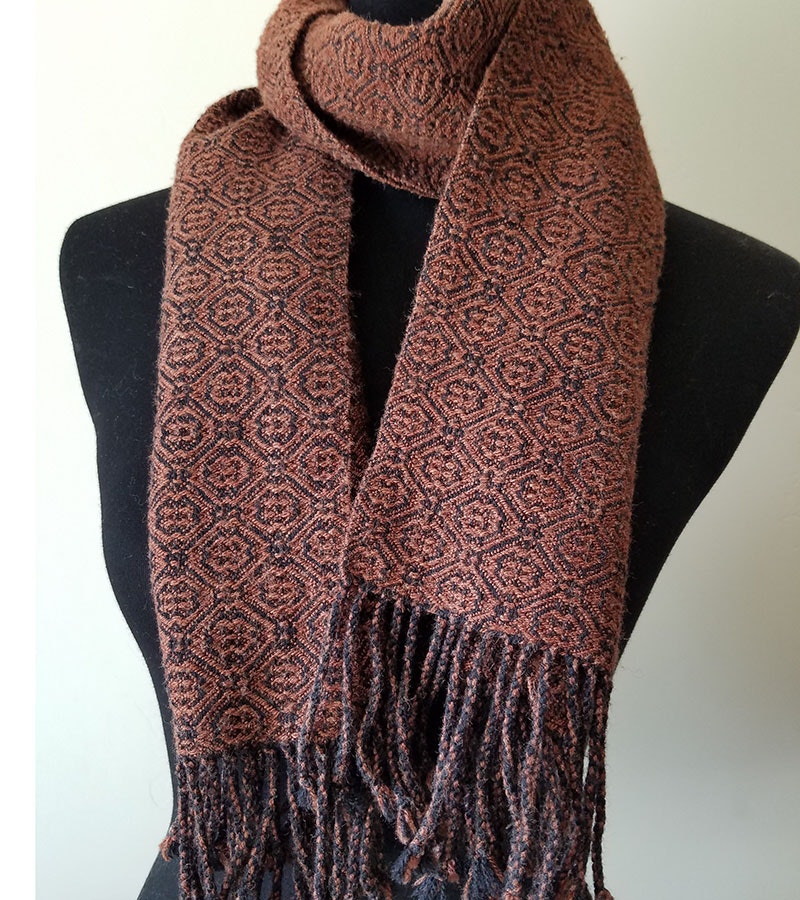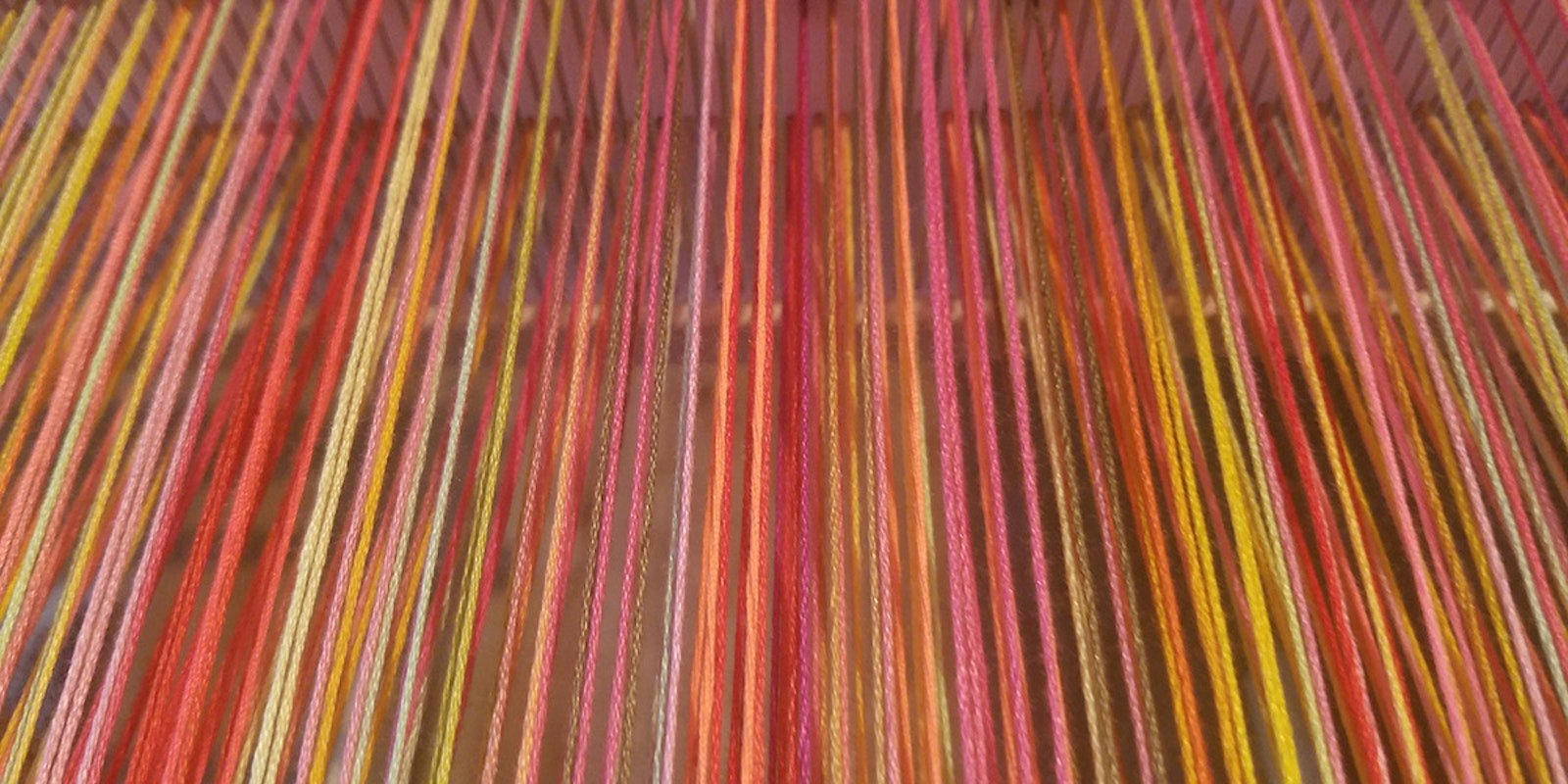Weaving didn’t necessarily come naturally to me. The first thing I wove was a class sampler that included plain weave and twills so the edges had no chance of being straight. I chose ugly colors for the warp and crossed them with equally ugly colors in the weft. While I’d like to say this magically turned the ugly colors into something beautiful or even interesting, it just magnified the ugly even more. I didn’t know I should pay attention to the weight of the weft, so that added to the “new weaver selvedge problem.” In the beginning, I forgot about bubbling the weft resulting in the top part being very drawn-in. My beat was inconsistent, and it showed throughout the weaving, but particularly in the parts of the sampler that were weft-dominant. It was an all-around lovely piece.
I didn’t even bother finishing the sampler properly. It went into a drawer (and eventually the landfill), and I started my next project: cotton twill placemats that were okay except that I ran out of warp and wove only 3. My third project was a couple of chenille scarves that wormed terribly, but by that time I was hooked, and it didn’t matter; I was going to weave. I don’t remember what my fourth project was, but I think it worked out because I never looked back from that point on.

I wove this scarf a year or so after learning to weave. You may not see it, but there is a treadling error right smack in the middle. I see it every time my husband wears this scarf. Photo by Susan E. Horton
Maybe we get hung up on the word sampler. We think of those pretty little embroidered or cross-stitched pieces from the Colonial period with the alphabet all written out and the sweet sayings and perhaps some flowers or a house at the top. That is not what a weaving sampler is. A weaving sampler shouldn’t be framed. Perhaps we should just change its name: “Hideous First Piece” comes to mind or “Weaving Mistakes on Display.”
I’ve taught a lot of people how to weave, and I’ve put all of them through the sampler routine. I know it’s not fun, but it’s part of learning to weave, and part of that learning might be letting go of the goal of perfection. My advice is to not think of that first piece as anything but a tool to get to the next step. That next step might not even work out as you want, but I can assure you that if you keep taking those little steps, one day you will call yourself a weaver.
Weave well, Susan

